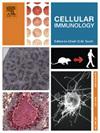有氧运动通过TP73-AS1激活let-7e-5p,抑制HMGB1/RAGE轴,缓解哮喘气道炎症和重塑
IF 2.9
4区 医学
Q2 CELL BIOLOGY
引用次数: 0
摘要
哮喘是一种慢性呼吸系统疾病,其发病率的上升与microRNAs (miRNAs)和长链非编码rna (lncRNAs)在其发病机制中的参与有关。然而,关于lncRNA TP73-AS1和let-7e-5p对这种疾病的影响的数据缺乏。因此,我们旨在探讨有氧运动(AE)对哮喘小鼠模型中lncRNA TP73-AS1、let-7e-5p、炎症和高迁移率组框1 (HMGB1)/晚期糖基化终产物受体(RAGE)的可能影响。在卵清蛋白(OVA)刺激下,哮喘小鼠模型HMGB1/RAGE显著上调。let-7e-5p过表达,在哮喘小鼠模型中被发现显著下调,似乎可以抑制EMT,并可能通过抑制HMGB1/RAGE通路减轻哮喘小鼠的气道炎症。有氧运动与哮喘小鼠气道炎症和重塑的减少有关,并且在哮喘ova小鼠模型中似乎抑制TP73-AS1的表达。此外,TP73-AS1可能通过下调let-7e-5p表达,激活HMGB1/RAGE-NF-κB通路,从而加重ova诱导的哮喘小鼠气道炎症和重塑。这些发现提示了哮喘治疗的潜在创新方法,值得进一步验证。本文章由计算机程序翻译,如有差异,请以英文原文为准。
Aerobic exercise activates let-7e-5p through TP73-AS1 to inhibit the HMGB1/RAGE axis and alleviate asthma airway inflammation and remodeling
The rising incidence of asthma, a chronic respiratory condition, has been associated with the involvement of microRNAs (miRNAs) and long non-coding RNAs (lncRNAs) in its pathogenesis. Nevertheless, there is a shortage of data pertaining to the impact of lncRNA TP73-AS1 and let-7e-5p on this disease. Therefore, we aimed to explore the possible effects of aerobic exercise (AE) on lncRNA TP73-AS1, let-7e-5p, inflammation, and high mobility group box 1 (HMGB1)/receptor for advanced glycation end products (RAGE) in asthma mouse models. HMGB1/RAGE was significantly upregulated in asthma mouse models using ovalbumin (OVA) stimulation. The overexpression of let-7e-5p, which was found to be significantly downregulated in asthma mouse models, appeared to inhibit EMT and might alleviate airway inflammation in asthmatic mice through the suppression of the HMGB1/RAGE pathway. Aerobic exercise was associated with reduced airway inflammation and remodeling in asthmatic mice, and appeared to suppress TP73-AS1 expression in asthma OVA-mouse models. Furthermore, TP73-AS1 may exacerbate airway inflammation and remodeling in OVA-induced asthmatic mice by downregulating let-7e-5p expression, which could activate the HMGB1/RAGE-NF-κB pathway. These findings suggest potential innovative approaches for asthma management, which warrant further validation.
求助全文
通过发布文献求助,成功后即可免费获取论文全文。
去求助
来源期刊

Cellular immunology
生物-免疫学
CiteScore
8.20
自引率
2.30%
发文量
102
审稿时长
30 days
期刊介绍:
Cellular Immunology publishes original investigations concerned with the immunological activities of cells in experimental or clinical situations. The scope of the journal encompasses the broad area of in vitro and in vivo studies of cellular immune responses. Purely clinical descriptive studies are not considered.
Research Areas include:
• Antigen receptor sites
• Autoimmunity
• Delayed-type hypersensitivity or cellular immunity
• Immunologic deficiency states and their reconstitution
• Immunologic surveillance and tumor immunity
• Immunomodulation
• Immunotherapy
• Lymphokines and cytokines
• Nonantibody immunity
• Parasite immunology
• Resistance to intracellular microbial and viral infection
• Thymus and lymphocyte immunobiology
• Transplantation immunology
• Tumor immunity.
 求助内容:
求助内容: 应助结果提醒方式:
应助结果提醒方式:


